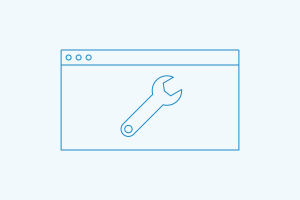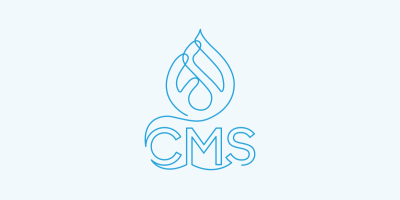Tips for Effective Drupal Maintenance

Collection :
You’ve either chosen or are in the process of deciding on Drupal as your content management system (CMS) — good on you! We’re big fans of the open source platform, which is used by some of the top brands in the world from Pfizer and Japan Airlines to Princeton University and Paramount to power their high-traffic websites. Using it opens the door to tremendous possibilities — if you need inspiration, take a look at what some of the world’s most beloved brands have achieved — but even winning racehorses need upkeep to keep on keepin’ on.
Why is Drupal maintenance crucial?
All websites and the content management systems behind them require maintenance. So, like other CMSs, for Drupal to perform at its best, it needs regular care and feeding. Neglecting it would be like putting a prized racehorse out to pasture.
That’s because a digital racehorse like Drupal is, like any modern technology, continuously changing – its features and capabilities constantly being improved by thousands of developers, designers, digital marketers, and others who contribute to its growth. Falling behind that innovation cycle weakens your digital presence and gives hackers more chances to creep through unpatched holes and other vulnerabilities in your systems.
But it isn’t just Drupal that evolves. SEO strategies and digital standards, like those related to accessibility, also morph, affecting how websites are presented. By regularly following the tips below, you can stay on top of such changes as well as minimize opportunities for bad actors, because you can’t just “set it and forget it.” That approach will leave you with a website stuffed with stale content, suffering from version issues, and subject to cyberattacks.
Drupal website maintenance checklist
These recommendations pertain to all Drupal-powered websites and digital properties, but how often they need to be enacted depends on the number of customizations involved. The more customizations your site has, the more frequent maintenance checks you’ll need.
1. Status Report screen
The first order of business involves checking a Drupal feature: Status Report. This screen offers a comprehensive check of your site’s health, such as the permissions of the folders that Drupal has to access. It will tell you which modules are on the fritz or which libraries haven’t yet been installed. The report comes in plain text format to avoid issues that can result from cutting and pasting files and can be important during debugging or technical support issues.
2. Drupal Cron configuration
Drupal Cron can be a critical component to the automated maintenance activities that your Drupal site requires. It can be configured to run at predetermined intervals to automatically execute tasks like indexing content for search, checking for updates to Drupal core and modules, as well as removing temporary files.
To ensure that your Cron jobs will run on the schedule you specify and won’t impact site performance, we suggest using an outside tool, like Scheduled Jobs found in Acquia Cloud Platform. This way, you can precisely schedule the running of your Drupal Cron and ensure your site operates efficiently.
3. User and role audits caching
Large Drupal websites can become complex with various roles and permissions, and it’s always a good idea to reevaluate those roles and permissions to make sure the right folks have access to edit and publish content. By reviewing these permissions, you can ensure you haven’t inadvertently given access to the wrong person.
While reviewing your site’s roles and permissions, it’s also smart to review the user list to see who’s actually logging into the site and making updates. Past employees or spam accounts open up the site to bad actors and cause user bloat in the system. Always confirm that the people who need access are the people who have it. You can use something like the Block Inactive Users module to set time limits and easily stymie users who haven’t logged in for a while.
4. Uptime and performance monitoring
There’s nothing worse than not knowing your website is having an issue, especially when someone messages you from within the company, saying “Hey, is the website having problems?” You want to be notified of any hiccups as soon as possible. You can monitor your site using various tools that help track your site’s uptime, end user performance, API performance, and so on. That way, you and your team will know as soon as something comes up.
One such tool is New Relic APM (available to Acquia Cloud Platform users), which sets up synthetic monitoring for sites to monitor uptime and site performance, as well as offering access to a number of other important New Relic tools.
5. 404 errors and broken images and links
A mess of 404 errors and broken images and links will hinder your site’s SEO standing and page load speeds, which almost 70% of shoppers admit affects their willingness to buy from an online retailer. To avoid high bounce rates and a fractured user experience, be sure to properly redirect deleted pages, modified permalinks, or temporarily or permanently unavailable pages.
The popular Redirect module provides a submodule that logs 404 errors that occur on your site, which you can easily use to add redirects to fix issues. Site builders can also leverage the Fast 404 module to make sure that, when users do encounter a 404, it’s returned as quickly as possible.
6. Contact forms
Contact forms are an organization’s bread and butter. From newsletter sign-ups to event registrations and resource downloads, they collect valuable first-party data and leads and should receive regular attention. At least once a month, ensure your forms are up to snuff and that queries are making it to the right email inboxes. Skip this step and you may forfeit leads and contact information that could be used to shape future marketing campaigns. Remember: Data is king. Don’t let that crown slide past.
7. Content audits and revisions
Be sure to audit your site on a quarterly basis to check that content isn’t stale and to consolidate content if needed. Not only will you help your Drupal site but you’ll also aid your Drupal SEO.
If you’ve enabled Drupal Revisions on any of your content types, you might want to look into pruning old revisions via the Node Revision Delete module. Doing so will allow you to target the deletion of revisions and maintain a clean database.
8. Code and database backups
Every Drupal site has three primary components that require backup: code, database, and files. They’re critical to the functioning of your Drupal site, and when one of them is unavailable or corrupted, you’ll be in for a long day. If your hosting provider doesn’t offer an automated way to create backups, keep a copy of your site's code, a periodic copy of the database, and a TAR/ZIP of the files.
A good Drupal hosting partner will handle all of this for you. For example, with Acquia Cloud Platform, you can manually perform a backup at any time using the Cloud Platform UI and safely store it in the cloud, or you can automate the daily backup of databases with Scheduled Jobs, so you never forget to perform a manual backup.
9. Drupal core and module updates
Drupal core and its modules receive dedicated attention from software experts like those who compose its security team, with a far-ranging community also offering continuous monitoring. Stay up to date with the releases that are published here.
And remember: Since a continuous innovation cycle was ushered in with Drupal 8, upgrades and minor software versions are released more often. Waiting around for updates and improved features is a thing of the past.
However, if your organization is still on an older version of Drupal, like Drupal 8, which reached its end of life (EOL) in 2021, or wants to upgrade to a more recent version, check here for ways to do that. (Note, too, that Drupal 7 is scheduled for EOL on January 5, 2025; Acquia offers support for that if you need it.)
Plus, updates in Drupal 10 will soon be easier with the upcoming Automatic Updates module currently in beta. It’ll be able to detect database updates that are part of an incoming update so that you can run them during the process. In addition, it’ll feature a sandbox where users can apply patch-level updates separate from their site until the updates are ready for deployment. Lastly, Automatic Updates will ID and report issues at each stage of the update process; no more unpleasant surprises after an update has gone live.
What’s next?
The above recommendations are a must for your Drupal website maintenance to-do list, but you can also work with partners, such as a good hosting provider, who can relieve you of that duty. What’s non-negotiable is performing reliable website maintenance. Ignore that and you run the risk of increased cyberthreats, a lower spot in the SERPs, and slowing your page load times, thereby damaging your customer experience and brand reputation. Avoid all that; find out how with Drupal.


